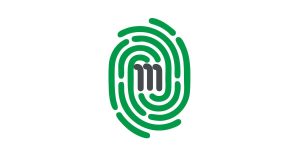A necessary part of growing a business is making sure that it has the financial tools it needs to track everything from invoices to payroll. While a startup may keep track of its finances on scrap paper, these makeshift systems are at best inaccurate and at worst an invitation to scam artists and financial mismanagement. That’s why it is crucial to have an effective program and system in place for any staff member that needs to enter financial data. In many cases, choosing a program to assist you with doing your accounting online is the answer. Getting started, however, can be a bit of a challenge. Follow these steps to get your online accounting software system started.
Pick the right system
Doing your accounting online can come with a unique set of advantages and disadvantages. To narrow your choices, consider who will be using the software most often and whether they have a system they already know. If your business relies on an outside accounting firm, it may be a good idea to match your software programs with them to transmit data easily and to keep communications simple. If you’re picking a system without having any prior experience with online accounting, you may want to consider options that are easy to learn or have a reputable customer support team. If you’re planning to expand your business, you will want to be sure that your chosen software allows you to expand. For example, you may only need a program that tracks your spending and invoices right now, but next year you may want to upgrade to a version that will generate payroll reports. Rather than switch systems entirely, be aware of the upgrades or expansions you may need now.
Take the time you need to learn your program at the outset
Waiting until there is a financial problem or a tax deadline looming is not the best time to start figuring out how your software program works. Plan ahead. Pick a down time for your business to learn the system, or carve out time in your schedule to learn your new software.
Think about security
Unfortunately, this is an area that many small business owners neglect under the mistaken assumption that their company is too small to be noticed by scam artists. While you may not need a high-tech system, take the time to turn on the security features that come with your software. This secures your communications with your bank, suppliers, and customers. Transitioning to doing your accounting online is not a way to become impervious to cyber crime, but allows your data to be stored offsite in world-class data centers and offer remote access.
Set up the basic information about your company
Setting up can be time-consuming, but it’s important to do this before issuing checks, invoices, and receipts. Entering your basic information gives a professional, consistent look to every document your programs produces. During an audit, it is critical to have quick access to complete information such as Tax ID numbers and your employees’ personal information. Enter as much information as you can now to ensure that other users of the system have this information readily accessible.
Track your money
Once your account is set up, and you are familiar with how the program works, keeping track of your money shouldn’t be too complicated. Nonetheless, you may want to start slowly to ensure that you really know the software before making big changes. Make a list of priority items and tackle the jobs that seem most manageable first.


















Add comment